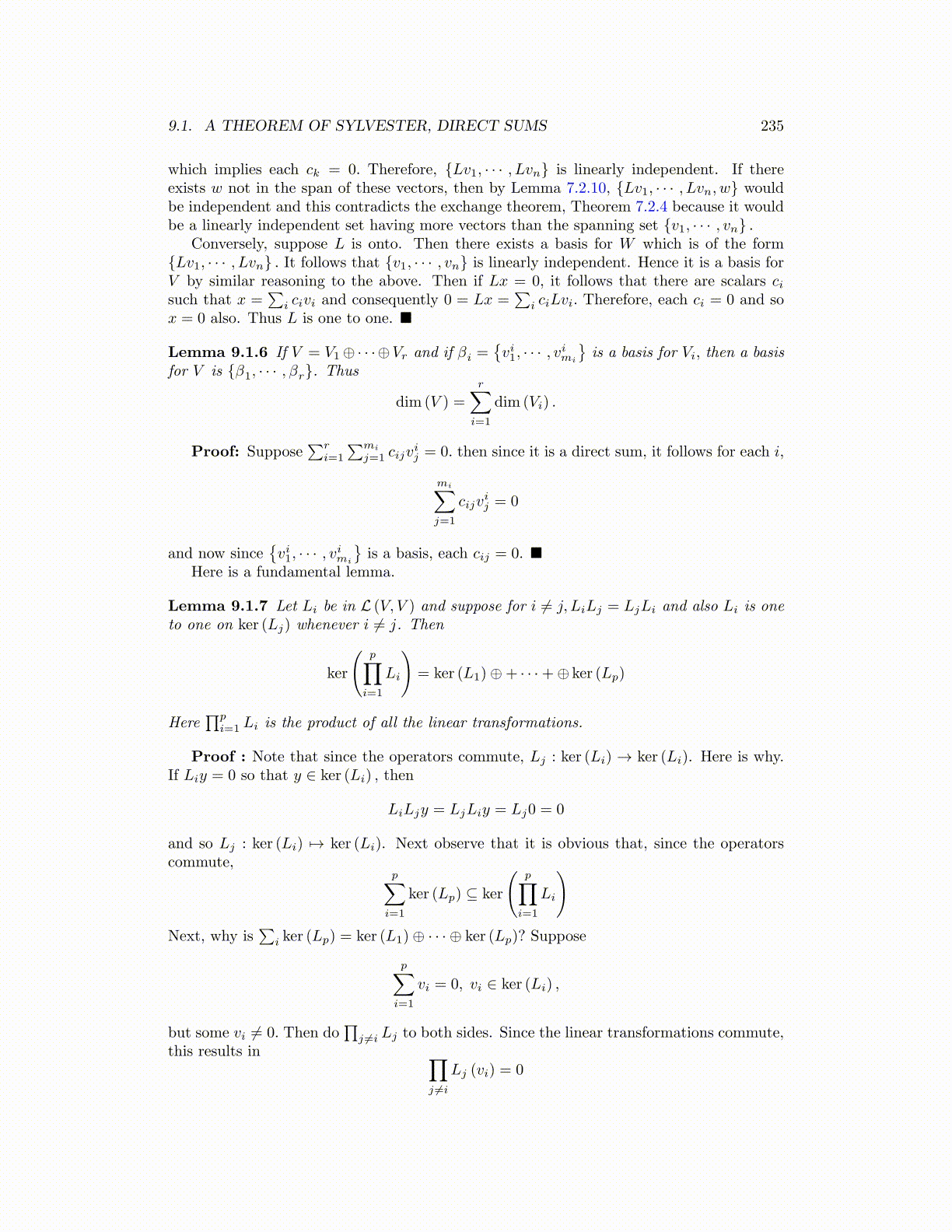
9.1. A THEOREM OF SYLVESTER, DIRECT SUMS 235
which implies each ck = 0. Therefore, {Lv1, · · · , Lvn} is linearly independent. If thereexists w not in the span of these vectors, then by Lemma 7.2.10, {Lv1, · · · , Lvn, w} wouldbe independent and this contradicts the exchange theorem, Theorem 7.2.4 because it wouldbe a linearly independent set having more vectors than the spanning set {v1, · · · , vn} .
Conversely, suppose L is onto. Then there exists a basis for W which is of the form{Lv1, · · · , Lvn} . It follows that {v1, · · · , vn} is linearly independent. Hence it is a basis forV by similar reasoning to the above. Then if Lx = 0, it follows that there are scalars cisuch that x =
∑i civi and consequently 0 = Lx =
∑i ciLvi. Therefore, each ci = 0 and so
x = 0 also. Thus L is one to one. ■
Lemma 9.1.6 If V = V1⊕· · ·⊕Vr and if βi ={vi1, · · · , vimi
}is a basis for Vi, then a basis
for V is {β1, · · · , βr}. Thus
dim (V ) =
r∑i=1
dim (Vi) .
Proof: Suppose∑r
i=1
∑mi
j=1 cijvij = 0. then since it is a direct sum, it follows for each i,
mi∑j=1
cijvij = 0
and now since{vi1, · · · , vimi
}is a basis, each cij = 0. ■
Here is a fundamental lemma.
Lemma 9.1.7 Let Li be in L (V, V ) and suppose for i ̸= j, LiLj = LjLi and also Li is oneto one on ker (Lj) whenever i ̸= j. Then
ker
(p∏
i=1
Li
)= ker (L1)⊕+ · · ·+⊕ ker (Lp)
Here∏p
i=1 Li is the product of all the linear transformations.
Proof : Note that since the operators commute, Lj : ker (Li) → ker (Li). Here is why.If Liy = 0 so that y ∈ ker (Li) , then
LiLjy = LjLiy = Lj0 = 0
and so Lj : ker (Li) 7→ ker (Li). Next observe that it is obvious that, since the operatorscommute,
p∑i=1
ker (Lp) ⊆ ker
(p∏
i=1
Li
)Next, why is
∑i ker (Lp) = ker (L1)⊕ · · · ⊕ ker (Lp)? Suppose
p∑i=1
vi = 0, vi ∈ ker (Li) ,
but some vi ̸= 0. Then do∏
j ̸=i Lj to both sides. Since the linear transformations commute,this results in ∏
j ̸=i
Lj (vi) = 0